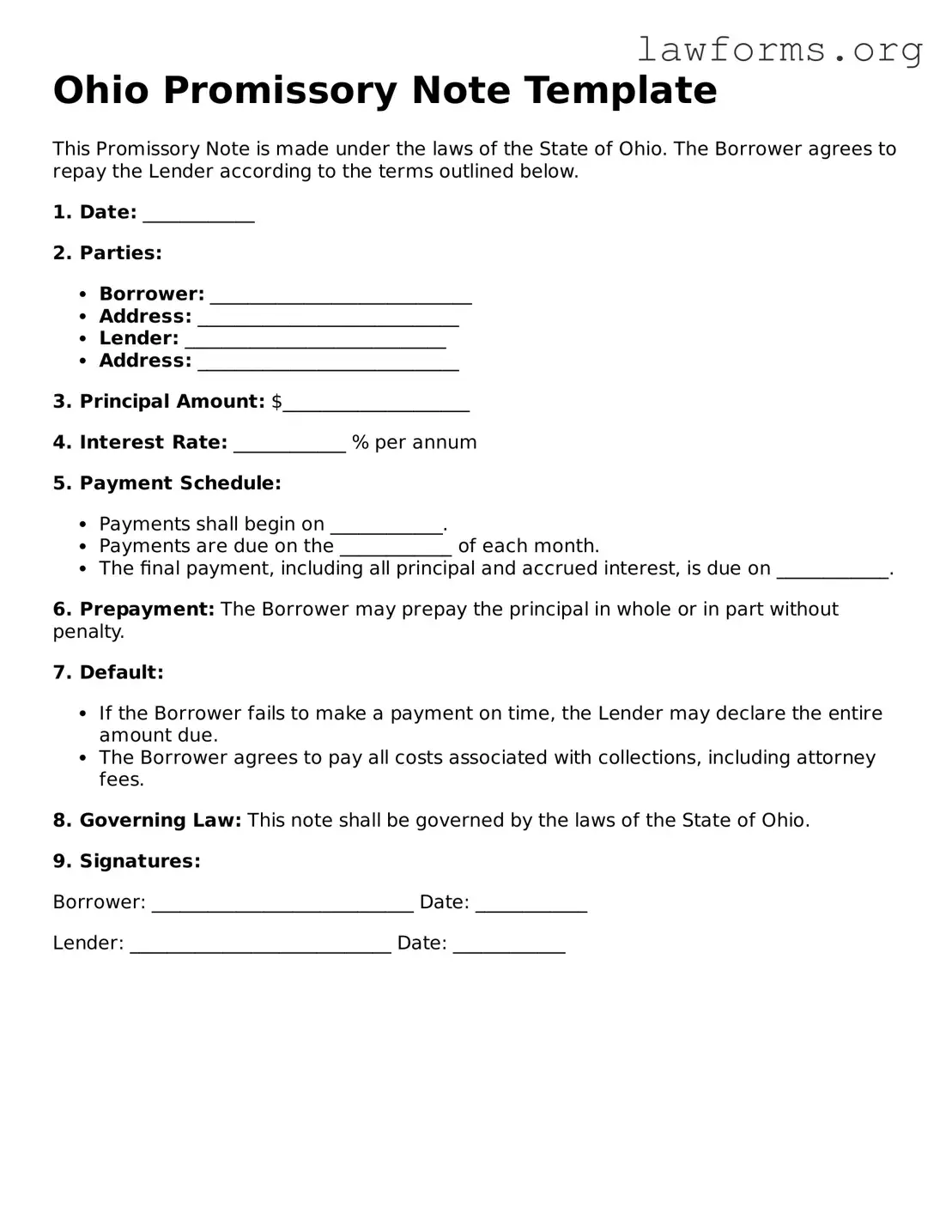Attorney-Approved Promissory Note Template for the State of Ohio
A Promissory Note in Ohio is a legal document that outlines a borrower's promise to repay a specified amount of money to a lender under agreed-upon terms. This form serves as a record of the loan agreement, detailing the amount borrowed, interest rates, and repayment schedule. To ensure clarity and enforceability, it is essential to fill out the Ohio Promissory Note accurately.
Ready to complete your Ohio Promissory Note? Click the button below to get started!
Customize Document Online
